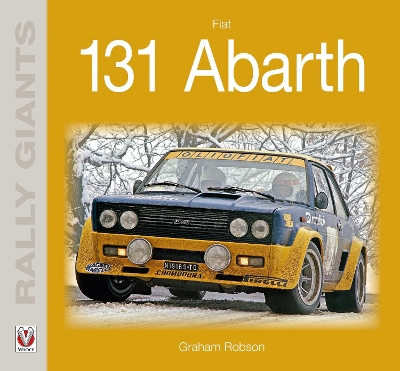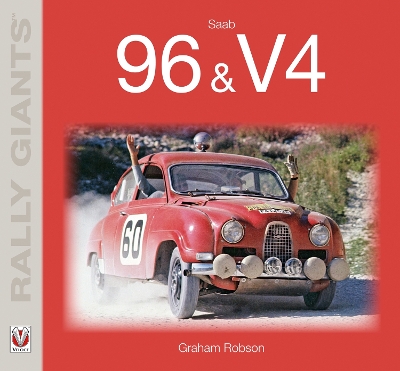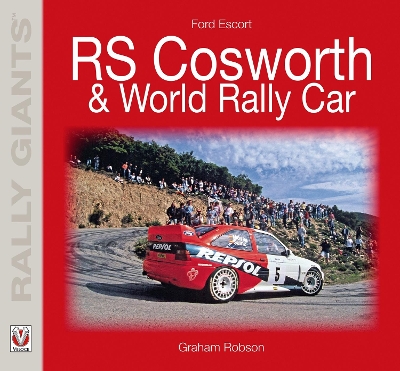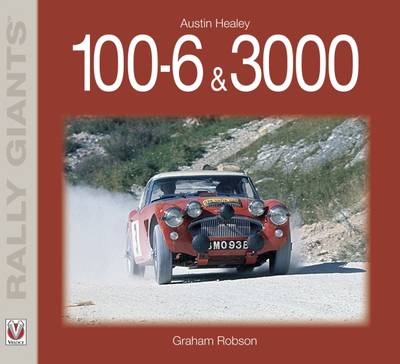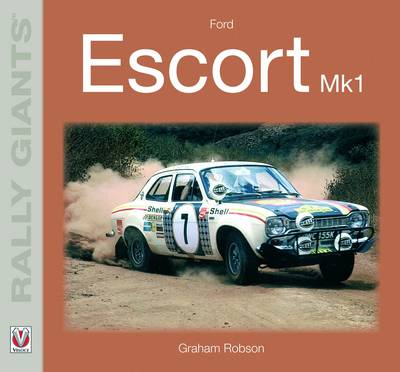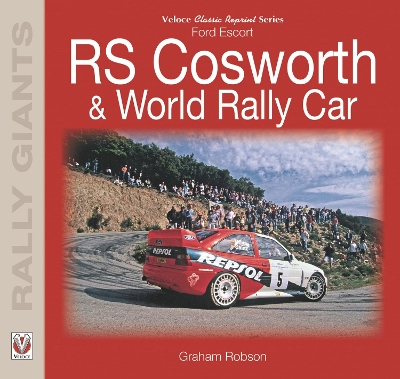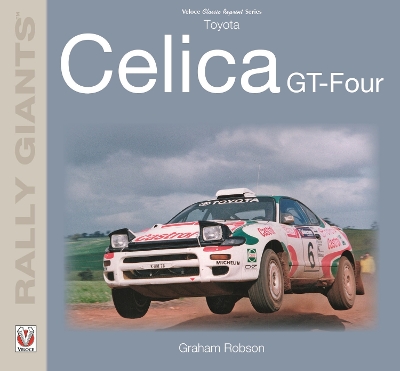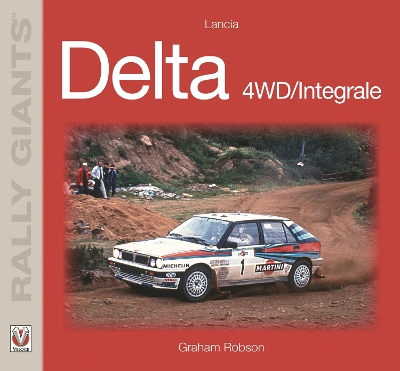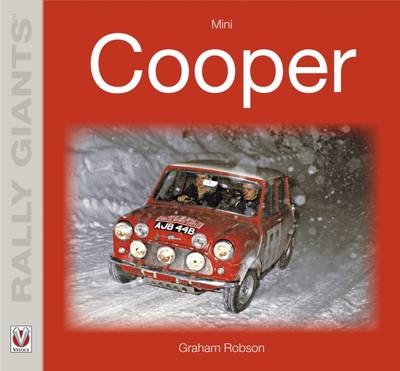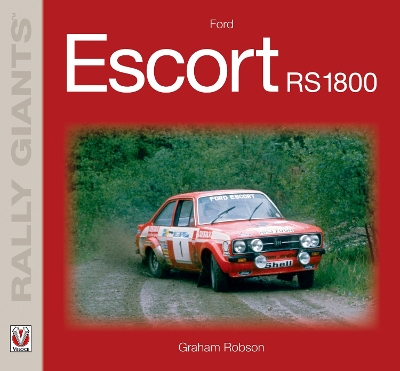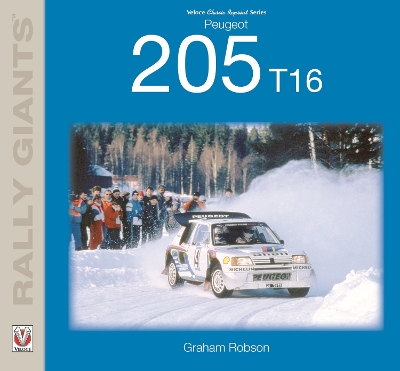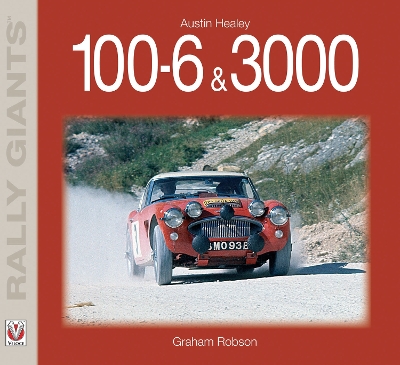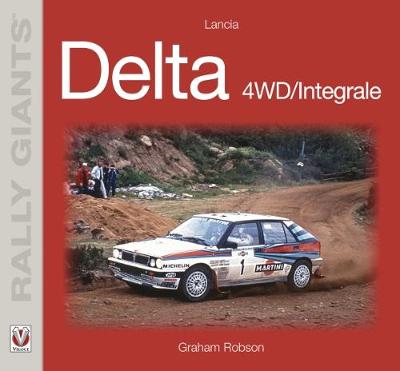Rally Giants
16 total works
Not only did it start winning World rallies within months of being launched, but in 1977, 1978 and 1980 the 'works' team also won the World Championship for Makes, and set every standard by which Rally Giants were to be judged. The 131 Abarth was backed by a peerless team of engineers, so was there ever any doubt that successors like the Lancia Rally 037 and the Delta Integrale would eventually come from the same stable?
More than any other car of its era, the 96 and V4 models proved that front-wheel-drive allied to true superstar driving could produce victory where no-one expected it.
Because it was smaller, lighter, and more nimble than any of the Sierras, the combination of Cosworth power, four-wheel-drive transmission, and an effective aerodynamic package made it a Rally Giant in all conditions. With five World victories in its first season, and success all round the world in later years, it was seen in every continent, in all conditions. Drivers like Carlos Sainz, Tommi Makinen and Francois Delecour added their own stardust to a glittering reputation. To meet a change in regulations, the Escort World Rally Car took over in 1997, and also enjoyed years of success.
Until the all-new Focus WRC was launched in 1999, this generation of Escorts was the most effective rally car that Ford had ever produced.
In nine eventful years - 1957 to 1965 - the six-cylinder-engined Austin Healey evolved into a formidable and increasingly specialised rally car. By any standards, it was the first of the `homologation specials' - a type made progressively stronger, faster, more versatile, and more suitable for the world's toughest International rallies.
Though the motorsport foundations had been laid by the Healey Motor Co. Ltd, the work needed to turn these cars into rock-solid 210bhp projectiles was almost all completed by the world-famous `works' BMC Competitions Department at Abingdon. It was because of their vast experience that the `Big Healeys' (as they were affectionately known) became fast and tough, nimble yet durable, so that they were capable of winning major events wherever traction could be assured. Not only did the works Austin Healeys win some of the world's most famous events - including Liege-Sofia-Liege, Spa-Sofia-Liege and the French and Austrian Alpine rallies - but they were also supremely fast on events like the Tulip, and came so close, so often, to winning their home event, the British RAC Rally, which traditionally ended the season.
The drivers - Pat Moss, Donald Morley, Rauno Aaltonen, Timo Makinen and Paddy Hopkirk among them - became heroes, while individual cars seemed to take on a character and reputation of their own.
This book lists each and every success, each and every notable car, and traces exactly how the machinery developed, and improved, from one season to the next. Over time, the works cars adopted aluminium cylinder heads and body panels, much-modified chassis, transmission and exhaust systems; they also became supremely strong and could withstand a true battering on the world's toughest events.
This book relates how the cars were improved by the engineers, how the drivers came to love their heavy and sometimes self-willed steeds, and how the management team got the most out of everything - machinery, personnel, drivers, and regulations. Heavily illustrated and packed with technical detail, this book will make a welcome addition to any motorsport fan's library.
Because it was smaller, lighter, and more nimble than any of the Sierras, the combination of Cosworth power, four-wheel-drive transmission, and an effective aerodynamic package made it a Rally Giant in all conditions. With five World victories in its first season, and success all round the world in later years, it was seen in every continent, in all conditions. Drivers like Carlos Sainz, Tommi Makinen and Francois Delecour added their own stardust to a glittering reputation. To meet a change in regulations, the Escort World Rally Car took over in 1997, and also enjoyed years of success.
Until the all-new Focus WRC was launched in 1999, this generation of Escorts was the most effective rally car that Ford had ever produced.
This book tells the whole story, and is part of the series "Rally Giants" many of which have recently been reprinted by Veloce, due to popular demand.
All types combined high-performance, great reliability, and superb preparation by Toyota Team Europe (based in Cologne, Germany), their 300bhp/four-wheel-drive chassis package being among the best in the world. Over the years, the cars won some of the roughest events in the world (such as the Safari and the Acropolis), and were also supreme on tarmac, snow and ice, including Monte Carlo.
After fighting a running battle with Lancia for years, the Celicas won the World Manufacturers' Championship twice. Its famous drivers included Carlos Sainz (World Champion in 1990 and 1992), Juha Kankkunen (Champion in 1993) and Didier Auriol (Champion in 1994).
Never far from controversy, and at times embroiled in technical and regulatory disputes, these cars brought real glamour to the colourful sport of rallying, and were only replaced by an even higher-tech Toyota – the Corolla World Rally Car – in 1997.
The Integrale was both the most successful rally ever produced by Lancia, and the last, for when the car came to the end of its career in 1993, the company finally and irrevocably withdrew from the sport.
The works Minis not only won the Monte Carlo three times – 1964, 1965 and 1967 – along with the European Rally Championship in 1965, but also won events all over the world. Because Minis were British, and well-promoted, they became seen as giant-killers, and were the people's favourite for many years. The car outpaced many of its rivals, and this book examines exactly who they were, and how they came to be defeated by the `mighty Mini.'
Even today, works Minis appear at every gathering of classic cars – and in 2009, Mini celebrates its 50th birthday. Packed with over 100 photographs, this book is a fitting and timely tribute to a much-loved Rally Giant.
Ford claims, and it may be right, that RS1800s have won more rallies, at World, International and National level than any other car in the world.
Four-wheel-drive had been authorised in rallying from 1979, but for a time no serious car-manufacturer even tried to harness it to their cars. Although it was Audi who produced the world's first rally-winning four-wheel-drive car - the Quattro - it was Peugeot who designed, developed, campaigned and won with the first truly sophisticated four-wheel-drive Group B Car - the 205 Turbo 16. It was the first truly great, purpose-designed, Group B car.
Determined to win at almost any cost, Peugeot hired Jean Todt (who would later transform the fortunes of the Ferrari F1 organisation) in 1981, and set him an ambitious target. His dream car had to be running in 1983, homologated in 1984, and capable of winning World Championships by 1985. Nothing, no excuses and no lack of application, was to get in the way of that. Apart from being obliged to use the silhouette of the still-secret new 205 road car, Todt was able ask for anything. Getting approval for whatever he needed and fast-tracking the engineering of the four-wheel-drive rally was not an issue in reaching one simple objective - victory!
This book tells the detailed story of all the cars, the influences, and the personalities behind a magnificent success story. No sooner had the new turbocharged, transverse-mid-engined car started competing, than it was ready to win, yet its dominant career was cut short at the end of 1986 by an abrupt change in rallying regulations. This is the engineering story laid out in great detail, as well as the interaction between company personalities, superstar drivers (including Ari Vatanen) and the highly-charged atmosphere of motorsport at this time. Because Group B was cancelled even before the 205 T16 had reached maturity, it went on to have a successful career in desert raid rallies, and at Pike Peak in the USA, all of which is described in this amazingly authoritative study.
Packed with illustrations, technical details, facts, figures and successes of this innovative car, this book is a must for any rally fan.
This book tells how the HF 4WD evolved over the years – first into the Integrale with its original 8-valve engine, then the Integrale 16V, and ultimately into the Integrale 16V Evo 1 (or 'Deltona', as it was affectionately known). This compact, five-door Lancia dominated world-class rallying for six years, winning innumerable events, World Championships for Drivers, and World Championships for Manufacturers. Alongside the cars, driving heroes such as Markku Alan, Didier Auriol, Miki Biasion, Juha Kankkunen and Carlos Sainz also became legendary in this period.
The Integrale was both the most successful rally ever produced by Lancia, and the last, for when the car came to the end of its career in 1993, the company finally and irrevocably withdrew from the sport.

